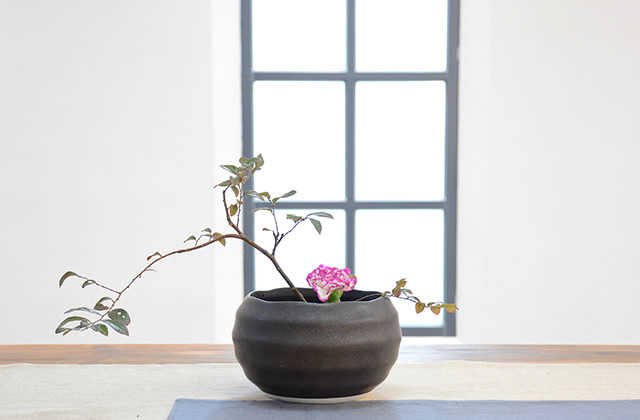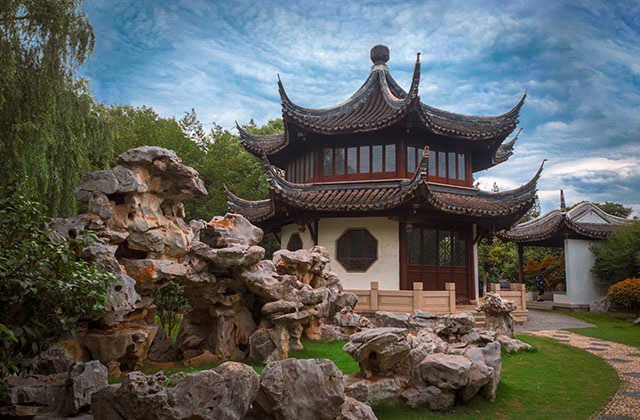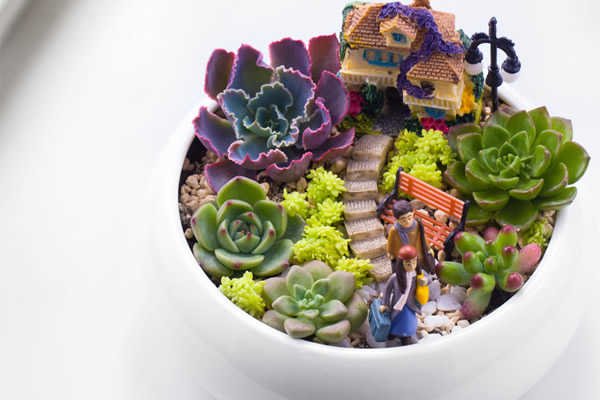Common potted flower watering techniques for potted daily watering precautions
1. Common potted flower watering skills
1. Rhododendron
Potted water once after planting, pay attention to watering during the growth period. From March, the amount of watering is gradually increased, especially in summer, it cannot be dehydrated.Water, after entering the room in winter, the pot soil should be dry and poured.It is best not to use tap water to water it if you water it.
2. Begonia flowers
Just keep the pot soil moist, but do not have accumulated water, otherwise it will cause yellow and fall off the leaves.Watering can be stopped in the cold winter, and the Fertilizer water is sprayed to the leaves to prevent accidental watering from accidental watering.Watering the soil is dry and then poured, and each time the water flows out.
3. longevity flower
longevity flowers are relatively drought-resistant flowers, so longevity flowers do not need a lot of watering. Generally, it is enough to keep water for about 3-4 days.The seasons mainly control watering, preventing longevity flowers from leading to rotten roots.
4. Ping An Tree
The pot soil should be kept moist. If the weather is relatively dry, spray the leaves water. summer leaves once a day in summer (you can pour it once first, and then water it again in less than half an hour). This can be avoided.Half -water appearing.The number of watering is different from the seasons, and water should be watered if the surface soil is a bit dry.
5. Fortune tree
The fortune tree generally does not have a lot of water once a month. Everyone must remember that the plant will not die quickly. After watering, it will be recovered quickly, but if the waterlogging is waterloggingSave, the fortune tree can usually spray more water and water less.
6. Clivia
Watering is best to choose rain or snow.Remember that when the Clivia is watering, "it is not poured without drying, and it will be poured through."Sometimes the gentleman Lanen is developed, coupled with soil boards, sometimes it is difficult to pour through.You can put the Flower pot in the bucket or washing basin as a whole and take it out for about 1 minute.Pay attention to watering in summer, that is, the phenomenon of water vapor isolation. The soil on the surface of the Flower pot looks dry, but in fact the soil of the root is still wet.If you water at this time, it is easy to cause a Clivia to rot the roots.We can insert it into the soil with our fingers to see if the soil is completely dry.If not, a few days will be a few days later.
7. Green Luo
The temperature in autumn and winter is relatively low. To reduce watering, the watering should not be diligent, watering should be poured less to the basin, and brown silk seeps.In addition, water should be sprayed with the roots of the brown pillars to reduce the insufficient water absorption of the roots due to the rapid evaporation.The water that is poured in winter is better after drying for a day.summer is usually watered every day or so. If the temperature is high, spray water on the leaves. If the green dill, the amount of water should not be too much, and the root of the roots is sufficient.
8. Camellia
It is better to keep the soil too dry or too humid. Generally, watering in spring and summer is also conducive to the growth of camellia. Pay attention to less watering in winter. Watering water once for two to three days is better.
9. Net -patterned grass
Be careful when watering the grass.If the pot soil is completely killed, the leaves will roll and fall off; if it is too humid, the stems will rot easily.The root system of the mesh is shallow, so when the surface soil is dry, watering must be performed, and the amount of watering should be slightly controlled, it is best to make the cultivation soil slightly humid.
10, succulent
Watering the Succulent plants is good for summer early morning, in winter, it should be carried out before the sunny noon in winter, and it can be morning and evening in spring and autumn.Do not pour water from the top.Watering must be poured enough, so that the soil must be loosen often, so that the pot soil can easily suck water evenly.For winter species and intermediate plants that are growing, the pot soil should be kept moist without water. Watering should be dried and watering. It should not be accumulated or too dry.summer species can be properly poured in water, but do not excess.If it encounters a rainy day or temperature suddenly decreases, watering is stopped.

2. precautions for daily watering of potted plants
1. Do not use water such as oil pollution or soap powder.These substances have a destructive effect on the soil, changing the pH of the pot soil, and seriously causes flowers and plants.In contrast, the old water replaced by rice water or fish tank has a certain amount of Fertilizer, which is much better than tap water. These water can be used completely.
2. Avoid watering at noon in midsummer.At this time, because the temperature is relatively high, the pores of the plant's root system are opened, and the watering suddenly is easy to make the flowers "a cold".
3. flowers with hair on the leaves, do not water the watering pot.The leaf surface is not easy to evaporate after spraying water, and it is very easy to rot, so it is better not to water with a romance, and should take watering measures.
4. If the flowers are in a bloom, it is not advisable to spray more water.Otherwise it will cause petals to rot.If the flowers and plants are expected to be forced and watering during the flower blooming period, it will also affect the fertilization of plants, thereby reducing the results.
5. Do not pour "half waist water"."Semi -waist water" is only watering and only wet surface soil, and the lower soil is dry.In the long run, a hard plate layer is formed at the junction of the wet and wet in the soil, making the root system of the plant difficult to tie.Therefore, we must master the principle of "pouring through" when watering.At the same time, with watering, it is also necessary to develop a good habit of pine earth: the pine soil should be carried out after watering, and the pot soil should be carried out. The depth is based on the root of the roots.
Third, Potted flowers should not be watered too much
All fairy palms, plasma flowers and plants are resistant to droughts and waterlogging, such as fairy balls, fairy boxing, aloe vera, arrow lotus, rooting root, etc. If the pot soil is wet or rainy, the most easy leaf rot and rotten.All meat roots, ball roots such as orchids, peony, peony, peony, Clivia, Dali flower, Dali Tung, auspicious grass, charming, Hewanglan, etc. are a major cause of death due to waterlogging.
Some wooden flowers are also very afraid of waterlogging, such as plum blossoms, Shou Tao, osmanthus, azalea, wax plums, smiling, bougainvillea, Nanyang Sugi, Brazilian wood, Kenbian Ruixiang and Begonia.If it is stained with water for 3-5 days, life will be dying and it is difficult to save.
Some flowers with wet and wet are also afraid of waterlogging, such as chrysanthemums, jasmine, Milan, Wenzhu, etc., because the pot soil is too wet or rainy for a long time, the root will suffocate.
4. Potted watering in different development periods
1. Nutrition
There is sufficient watering to leafy, otherwise the plant will grow slowly.However, it should not be blindly watered and causes the potting of the pot soil. The general watering principle is that the pot soil is wet and wet, and the dry and wet alternation is alternated to keep the soil moist.The "dry" mentioned here does not mean that the pot soil does not have any water at all. "Dry thoroughly, until it flows out of the bottom hole" is unscientific.Because the soil is dry, cracks will be produced between the pots and the soil. The cracked cracks are quickly lost during watering, and it is obviously impossible to pour through.In this case, first loosen the soil and then water it or directly use the pelvic method to give water.
2. Reproductive growth
When the flowers are transformed from nutrient growth to flower buds, such as excessive water or more nitrogen fertilizer, the formation of flower buds will also become leaf buds. Therefore, the method of deduction (controlling water) can be used to suppress the length of the branches and leaves in the flower bud differentiation period.Promote the formation of flower buds.Such as the delta plums, plum blossoms, blue peaches, magnolia, etc., control the water 2 to 3 times in June -July, and wait until the branches and leaves are withered and then watered, which can effectively increase the flow rate.
3. Flowing fruit period
Once the flowers are available for pregnancy and flowering, the water consumes the most, and the water must not be short, and the leaves of the branches should not be withered, otherwise the flowering period will be shortened.However, it is not appropriate to have too many, especially for accumulating water. Long -term water accumulation can lead to falling flowers and fruits.
5. Potted flower watering time
In the three seasons of spring, autumn, and winter, around 10 am and 4 pm are the appropriate time of pouring flowers.At noon in midsummer, the temperature is very high. The temperature of the flower and leaves can often be as high as about 40 C. The steaming effect is strong. At the same time, the water evaporates is fast.The water is added, but due to the sudden decrease in the soil temperature, the root hair is stimulated by low temperature, which will immediately hinder the normal absorption of the moisture.At this time, because there is no preparation in the flower, the leaf surface air holes are not closed, and the water loses the balance of the supply and demand, which causes the leaf cells to change from tension to withering, which causes the plant to produce "physiological drought".die.
This phenomenon is particularly obvious among herbal flowers, such as geranium, glory, and green chrysanthemums.Therefore, do not water the flowers at noon in the hot summer.In the same way, the temperature difference between the morning and evening in the winter and evening should be poured flowers when the soil temperature is closer to the temperature at noon.Many kinds of flowers are used to watering in the evening and mistakenly think that this is the best. In fact, it is the opposite, especially in winter or room. If watering at night, the dispersion of water is slow, which will increase potting soil and air humidity.Frozen damage.

